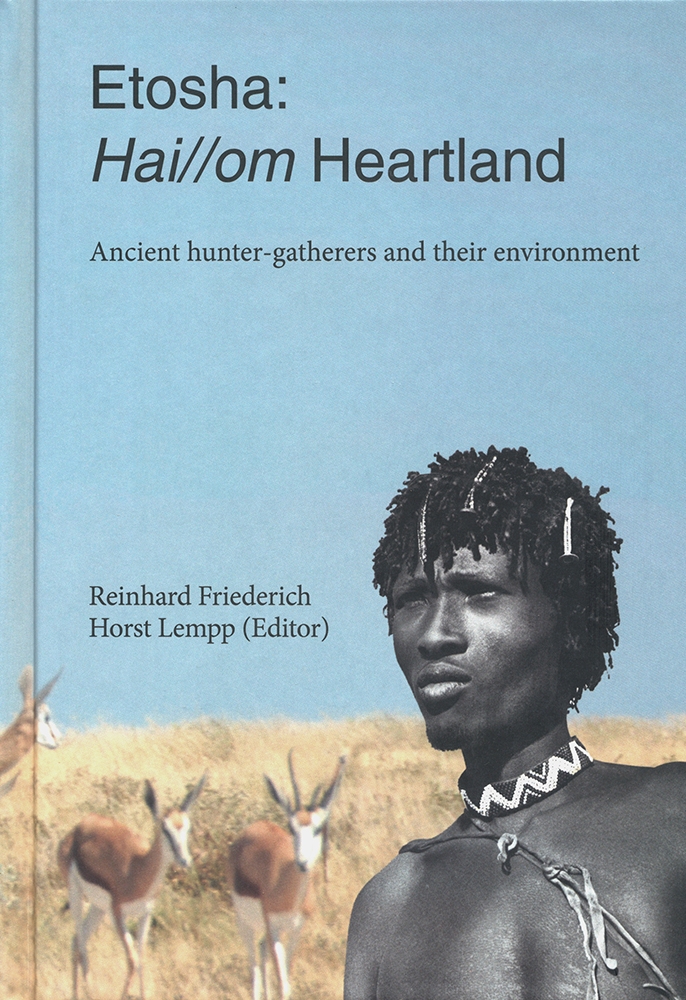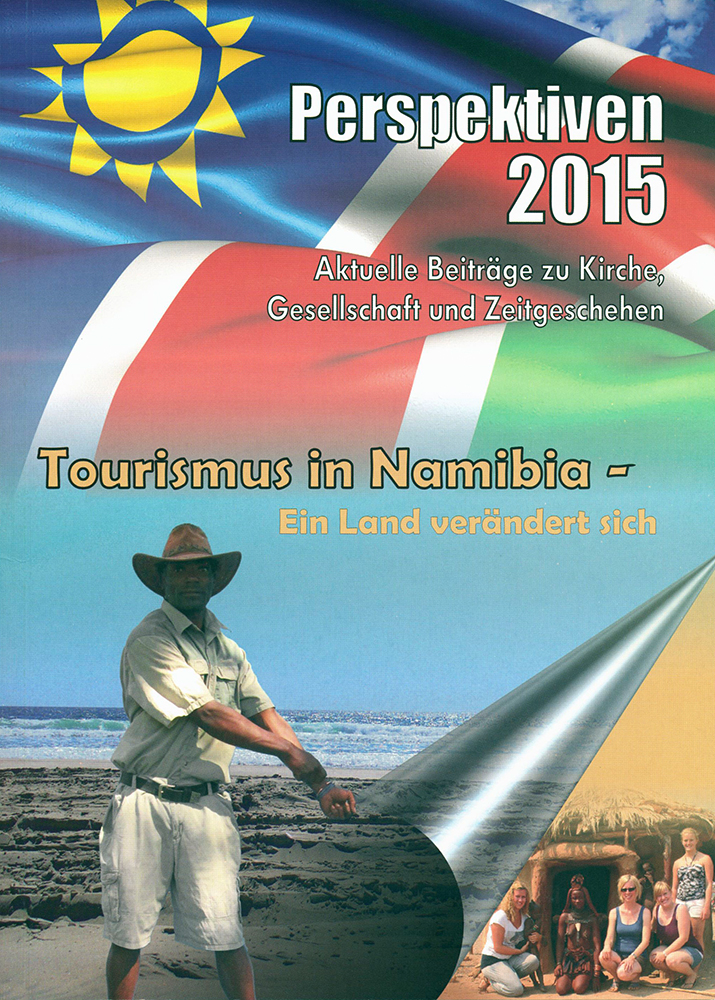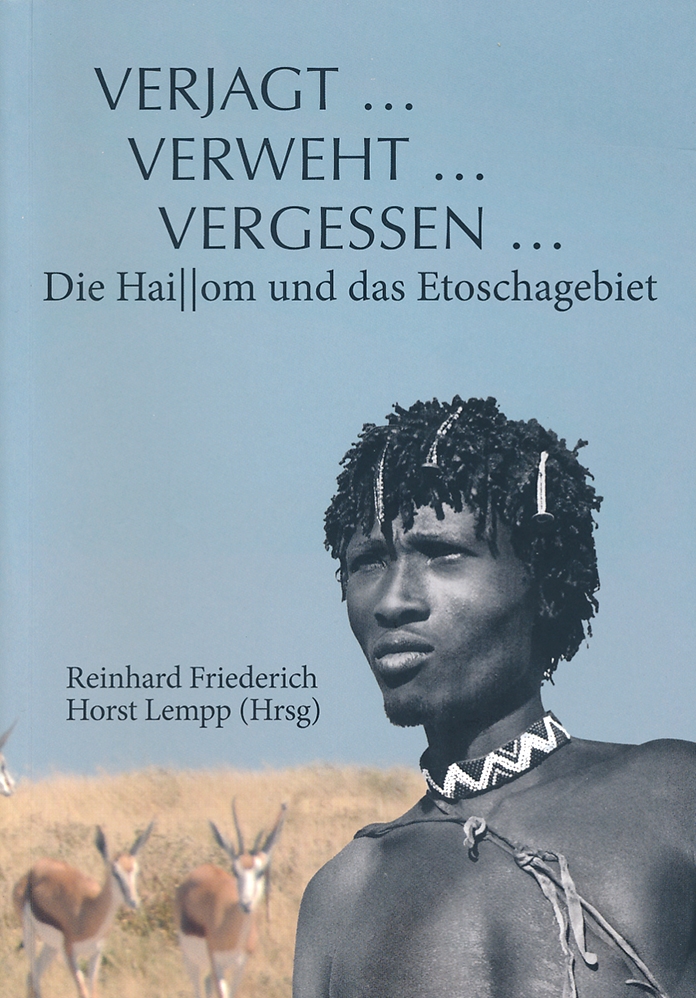Etosha: Hai//om Heartland, by Reinhard Friedrich and Horst Lempp
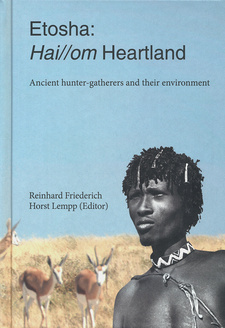
Etosha: Hai//om Heartland. Ancient hunter-gatherers and their environment, by Reinhard Friedrich and Horst Lempp. Namibia Publishing House. Windhoek, Namibia 2014. ISBN 9789991628592 / ISBN 978-99916-2-859-2
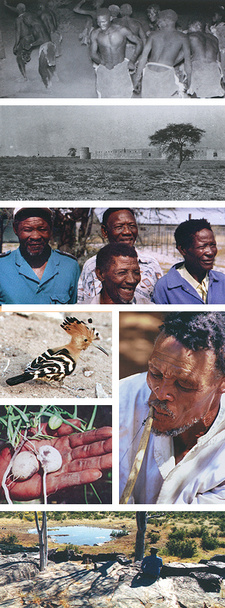
Impressions from Etosha: Hai//om Heartland. Ancient hunter-gatherers and their environment, by Reinhard Friedrich and Horst Lempp.
Etosha: Hai//om Heartland, by Reinhard Friedrich and Horst Lempp. Growing up with Hai//om farm workers on the parental farm, Reinhard Friedrich has an intimate knowledge of their way of life, their culture and their habits.
Etosha: Hai//om Heartland by Reinhard Friedrich and Horst Lempp is a testimony to the people that once lived and hunted in the Etosha area. It was written to capture the history and culture of the Haillom Bushmen, before their age-old knowledge is irrevocably lost. It is still being preserved and handed down orally by a few old people, who soon will no longer be there, or their memories may fall prey to dementia. As far as ethnological research is concerned it was fortunate that the German colonial government had already proclaimed the area as a nature reserve in 1907. This meant that the Haillom in Etosha were largely left in peace for another fifty years. They could continue undisturbed with their way of life within the traditional roaming areas. Then conditions started to deteriorate; during the past 50 years the Haillom became the victims of governmental arbitrariness and violence. These people, forgotten by the modern world, had to stand by helplessly and watch their culture's decline. Because it is the very basis of their social fabric to avoid conflict, they were unable to offer any resitance. This became their fate. Even today they are hardly recognized as people and citizens of the modern state of Namibia. Within living memory their lives were marred by constant harassment, distress and resettlement measures, even prosecution and ultimately expulsion from their hereditary living and roaming areas by the administrators of the Park and other authorities. Like all free-roaming peoples that despise government control, the Haillom irked the Park authorities, who initially tried to lure them away from the waterholes that were remote and deep in the bush and settle them closer to the roads, control posts and rest camps. Then again they were accused of chasing away the game by their presence and blamed for tourists not seeing any game; so they were chased back into the bush. Eventually they were all rounded up and forcefully removed from the Etosha area. What remained were only about 60 people employed by the Park administration. In the course of my story the names of many people whom I met during my research and who served as my informants will be mentioned. I would like to introduce the most important of these contemporary Haillom witness bearers. Their typical life stories are proof of their wish to be independent and attest to the love they have for their ancestral lands, causing many of them to return to the Etosha area again and again.
JAN IIORESEB
This man's very name may surprise you. A Haillom with the typical north European name Jan? Of course it was not his parent's idea: on the contrary it was common with the San (and other inhabitants of Namibia) to give descriptive first names to newborns that refer to a certain incident or characteristic. Jan was born as Tomagu INaebasun, which literally means "because his mother bore him alone". Due to the growing influence of the Europeans and their efforts towards "control" and written "registration," many names that were difficult for European tongues to pronounce, were replaced with more simple first names by the administrative authorities. Such names could often be traced back to the influence of Christian churches. In this way many of the people obtained "papers" (identity cards, identification documents and so forth), that reflected these new names and more often than not a presumed date of birth. [...]
This is an excerpt from Etosha: Hai//om Heartland, by Reinhard Friedrich and Horst Lempp.
Title: Etosha: Hai//om Heartland
Subtitle: Ancient hunter-gatherers and their environment
Author: Reinhard Friedrich
Editor: Horst Lempp
Publisher: Namibia Publishing House
Windhoek, Namibia 2014
ISBN 9789991628592 / ISBN 978-99916-2-859-2
Hardcover, 16 x 23 cm, 468 pages, numerous b/w and colour photographs
Friederich, Reinhard und Lempp, Horst im Namibiana-Buchangebot
Perspektiven 2015 / Afrikanischer Heimatkalender 2015
Perspektiven 2015, früher Afrikanischer Heimatkalender, bietet aktuelle Beiträge zu Kirche, Gesellschaft und Zeitgeschehen in Namibia: Tourismus in Namibia. Ein Land verändert sich.
Verjagt verweht vergessen. Die Hai||om und das Etoschagebiet
Verjagt, verweht, vergessen steht sinnbildlich für das Schicksal des aussterbenden Volkes der Hai||om, das einst im Etoschagebiet Namibias ansässig war.

